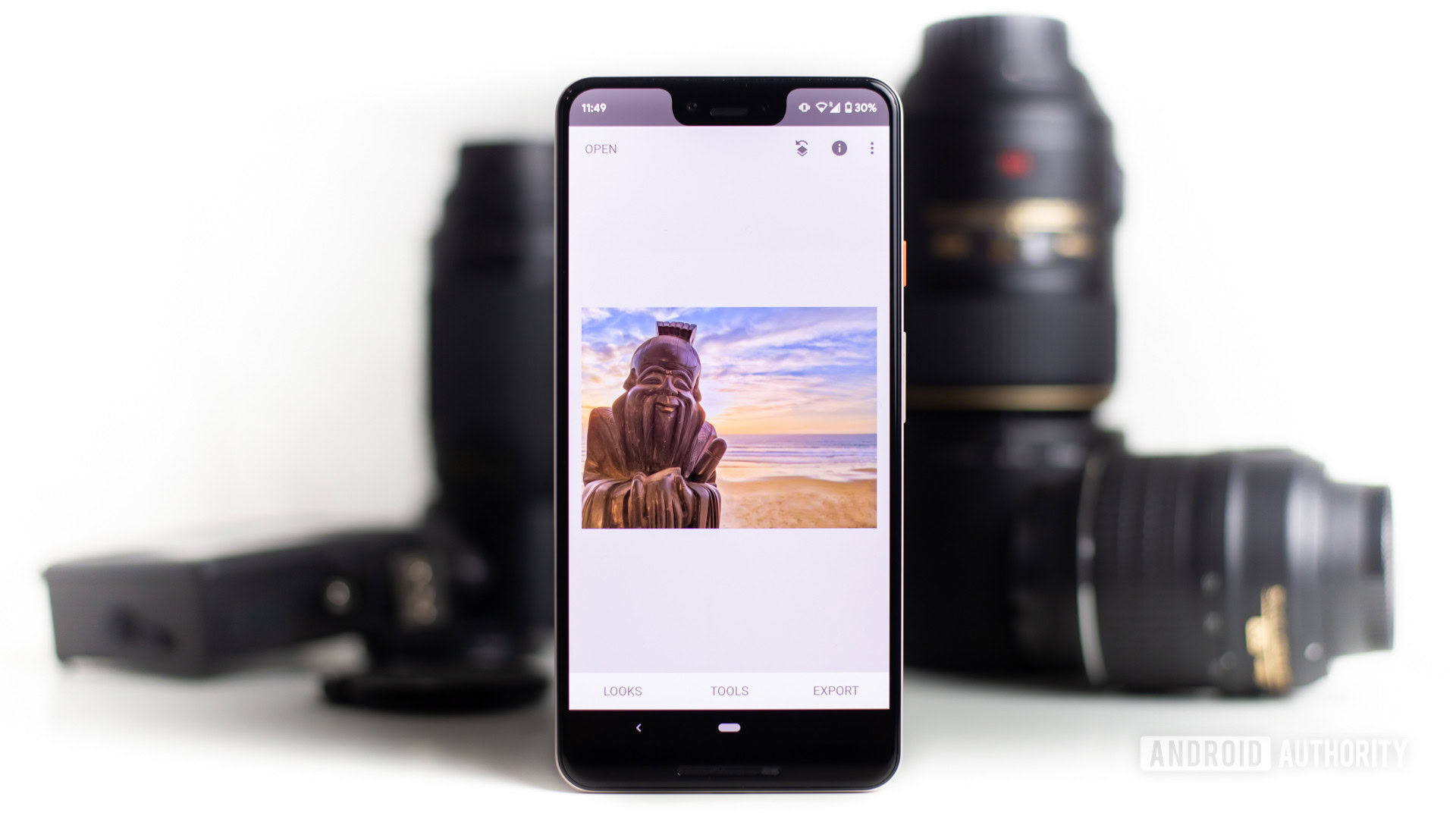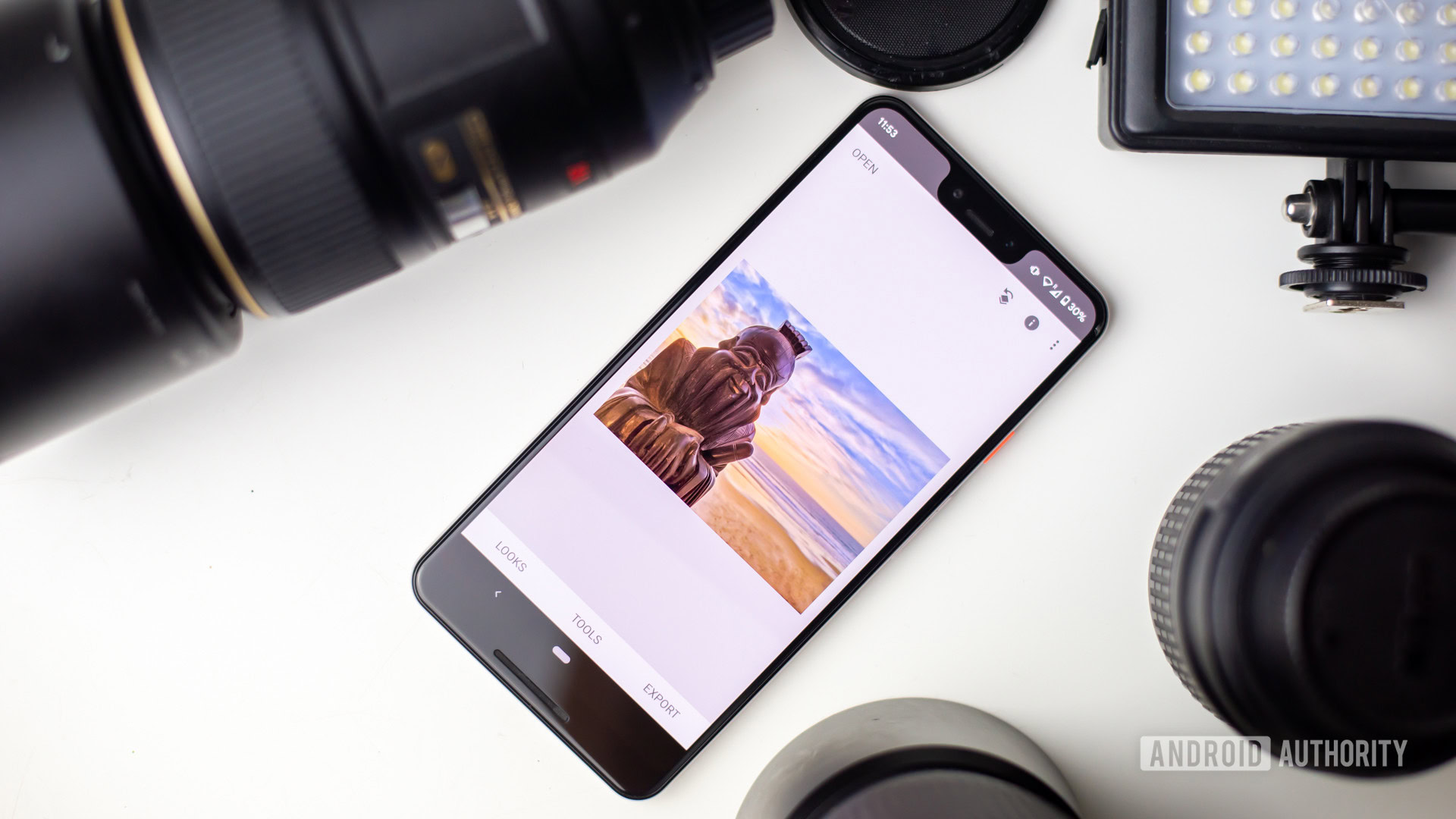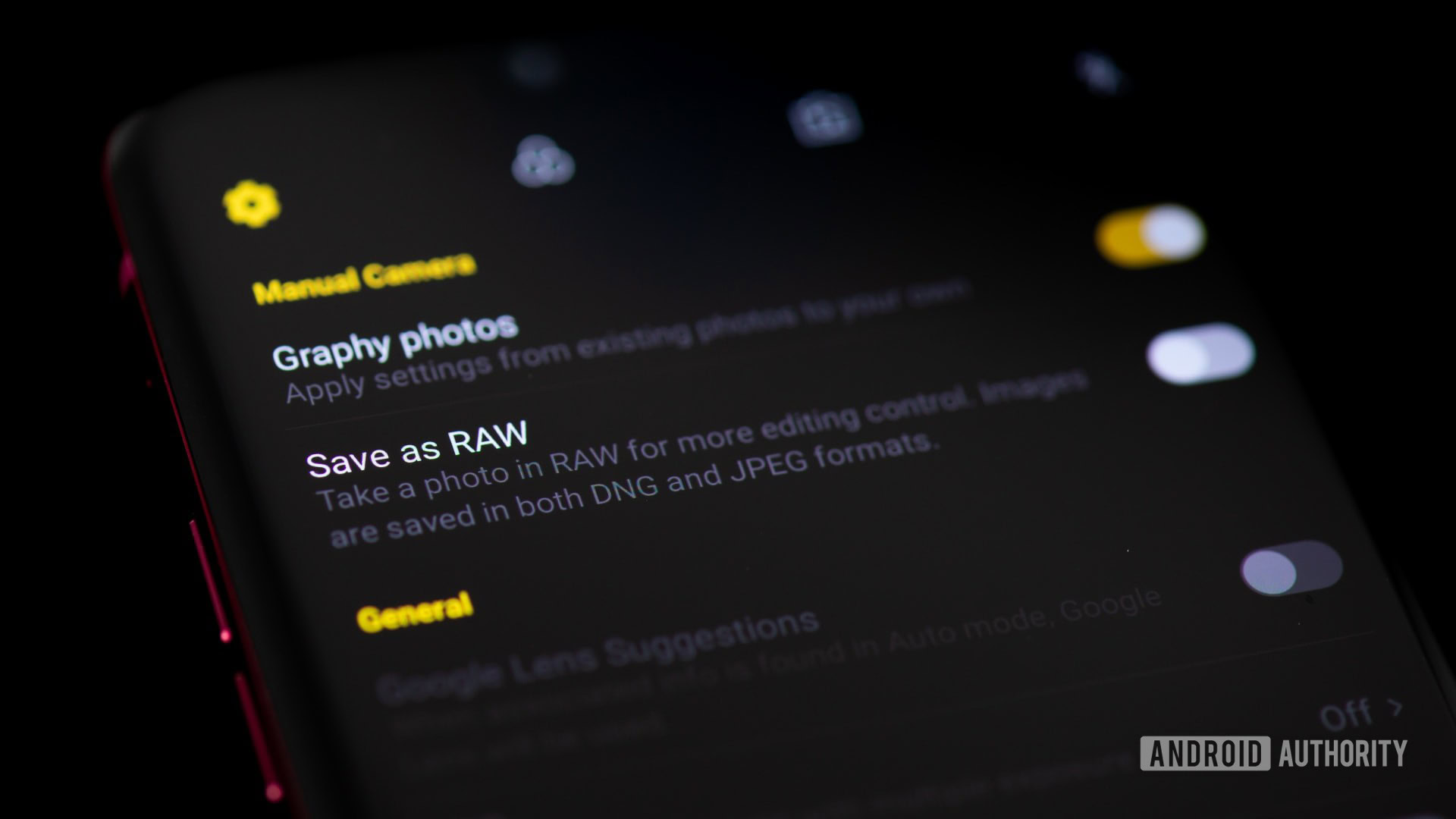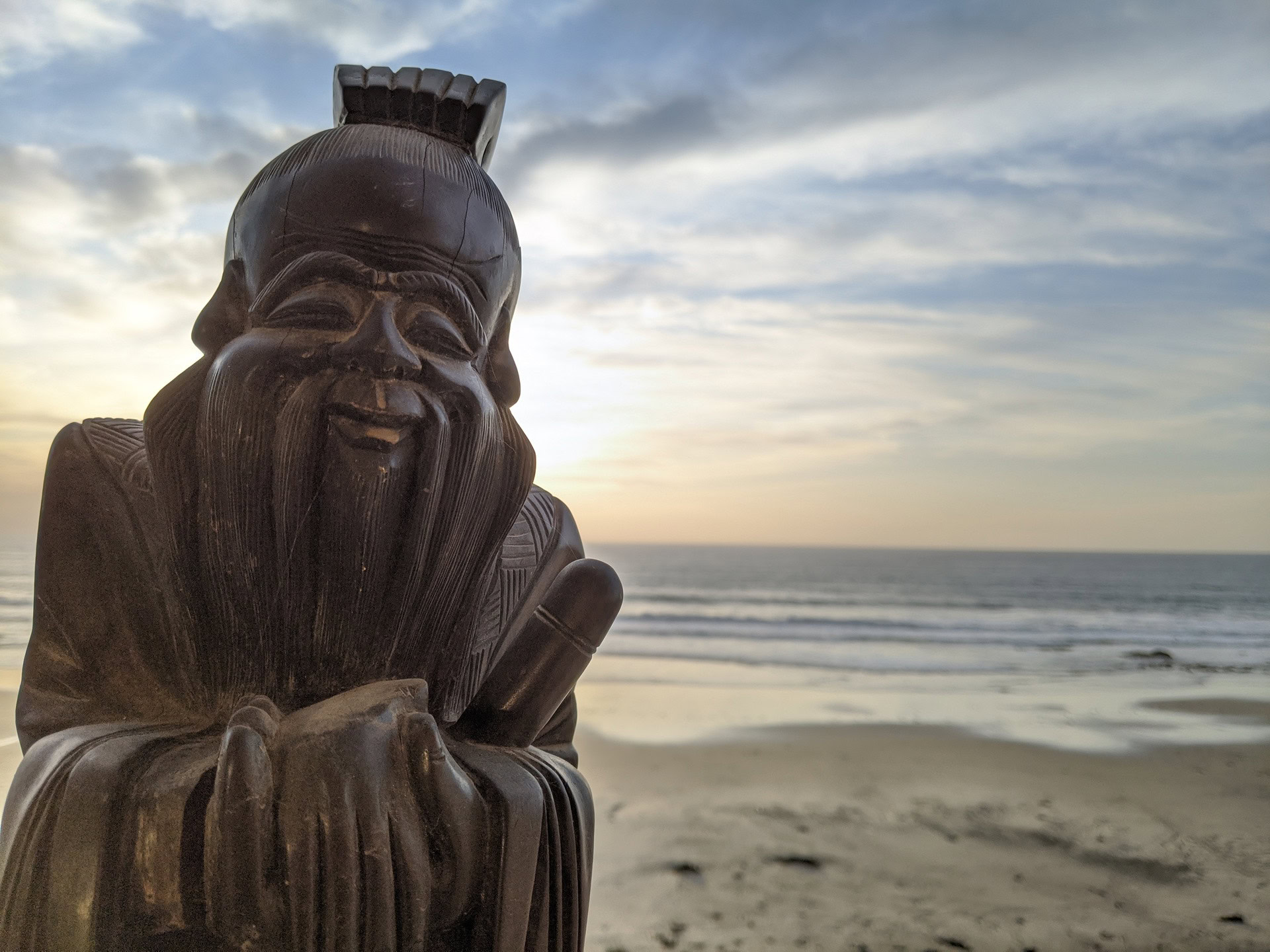Affiliate links on Android Authority may earn us a commission. Learn more.
Snapseed tutorial: How to edit a photo with your smartphone
Published onMarch 14, 2023

Snapseed is among the best mobile photo editor apps. Google purchased the company responsible for making Snapseed back in 2012. Since then, its popularity has continued to increase. It is known for its simplicity and abundant feature set. The app is also free, so you might as well give it a go. The only tricky part is learning how to use Snapseed, which this post is all about.
Before we get started: Learn these important photography terms
Many phones can take stunning photos, but any photographer will tell you taking a shot is only half the battle. Editing is a fundamental part of photography, as it can turn good images into stunning imagery.
We will take you through the editing process of a single image shot with a smartphone, using the most important settings. We won’t cover all options available in Snapseed. That would require more time and involvement. Instead, these Snapseed image editing tips and tricks are meant to get you started with the basics, upon which you can improve as you learn more about editing and photography.
What is Snapseed?

Snapseed is an advanced photo editing application. The app was designed to be operated via touch first. It was also one of the first mobile-focused photo editing apps to offer a near-desktop experience in terms of editing capabilities. It was so impressive when it launched in 2011 that it was named the iPad app of the year by Apple.
Nik Software developed Snapseed, but Google acquired it in 2012. Since then, it has improved and continues to be one of the best photo editors available for Android and iOS. Snapseed is now seen as a more advanced version of the Google Photos editor. When editing on Google Photos, you can scroll over to More, and there will be a direct link to open the image on Snapseed.
Both Google Photos and Snapseed can make basic edits like cropping, adding blur, fixing exposure, and adding filters. With Snapseed, you can access more advanced features. Let’s take a look at some of them.
Important Snapseed features:
- Fixing exposure, contrast, saturation, highlights, shadows, ambiance, and more.
- Enhance structure and sharpening.
- Vignette support.
- Use advanced color curves for editing.
- Advanced white balance controls for tint and temperature.
- Crop and rotation with guides.
- Perspective changes.
- Expanding feature with smart filling.
- Brush and selective edits.
- Lens Blur can add bokeh to images.
- Healing feature for removing unwanted objects from an image.
- Plenty of presets.
- Adding frames.
- Face Enhance can add focus to eyes, improve lighting, and smooth skin.
- Double exposure feature that simulates HDR.
- Text support.
- Custom framing.
- RAW support.
Shooting RAW vs. JPEG

There are some downsides to shooting in RAW, though. These files are much larger and can impact your storage space. It also requires more processing power to edit them, so you might not want to use them with a slower handset.
Photo shot with a smartphone

I wanted the image to be a general photo anyone can shoot, so I took a quick snapshot of a wooden statue I keep at home. No overthinking, no lights, no reflectors, no nothing. This is a simple shot we can turn into something extraordinary through the power of photo editing. It was shot with a Pixel 3 XL.
Snapseed editing tips
Consider Snapseed’s presets and filters
I am no fan of presets or filters, but there is no denying they make life easier than learning a plethora of editing parameters. After importing an image into Snapseed, you will see a tab in the lower-left corner that says LOOKS. Tap on it and look through Snapseed’s filters.
In addition, you can go to the TOOLS tab and find the HDR Scape, Glamour Glow, Drama, Vintage, Grainy Film, Grunge, Retrolux, Noir, Portrait, Lens Blur, and other special effects.
These automated edits may be all you require, or it could be a good starting point you can further fine-tune. As for me, I will keep the original image and edit it to my liking.
Fixing exposure
The first step to take is to fix exposure to your liking. Your phone isn’t always smart enough to measure lighting correctly. Even if it does, you might want an image to be darker or brighter for creative reasons. Snapseed has a way to fix this problem. Tap on the TOOLS tab and select Tune Image.
You can edit parameters like brightness, contrast, saturation, highlights, shadows, and more. Drag your finger up and down to select which parameter to edit. Then drag your finger left and right to edit whichever parameter you chose.
I want to make the image a little brighter and make everything look clearer, but I also wanted exposure to be uniform across the frame. To accomplish this, I lowered the contrast and highlights while increasing the shadows. Being at the beach, I felt a warmer tone would also give the photo a special touch, so I increased the warmth slightly.
Ambiance is a particular type of contrast that can balance exposure in a photo. It can create an unnatural look if overdone, so I usually don’t play around with it too much. I use it very slightly when I do. This time I increased it by 10.
Here are the changes so far. Not too shabby, but much more can be done to improve it.
Fix white balance using Snapseed
Fixing the white balance is usually one of my first edits. Cameras often read lighting wrong, which creates odd hues or tints. Go into TOOLS > White Balance, and make sure you find the balance between blue and yellow, as well as green and magenta. Alternatively, you can get creative and give images a hue or tint that wasn’t there when the shot was taken. Color theory is an integral part of photography.
I want to keep this image more traditional, and I have already added some warmth in previous edits. In this case, I will add a bit of magenta to the tint because that purple touch gives beach photos a unique look.
Crop, Rotate, and Perspective
I don’t have an issue with perspective or want to crop, but Snapseed has the option for those who want it. The perspective parameter can make a photo straight if you notice you shot it a bit crooked. Cropping can also be convenient for fixing composition or cutting off unwanted elements.
I will use the rotate function in this case because the horizon line is not leveled. To do this, go to TOOLS > Rotate.
Selective edits using the brush tool
The brush function can be used to make selective edits to your image. I want to add a more dramatic look to the sky, ocean, and sand in the background, without affecting the wooden statue. To do this, I will go to TOOLS and tap on Brush within Snapseed’s parameters. This section will allow me to edit exposure, temperature, saturation, and more locally. In this case, I want to saturate the background, so I will select Saturation and bring the parameter up to 10. After doing this, one can drag a finger over the areas that need change.
Tap on the eye icon to see the affected areas highlighted in red. If you accidentally edited sections you didn’t want to, bring the saturation level down to zero (labeled “eraser”) and drag your finger over the affected areas.
Get rid of unwanted objects using Snapseed
Have you ever taken an amazing picture only to find out an ugly piece of trash ruined it? It happens to the best of us. Healing makes it possible to highlight objects or elements you want gone. Snapseed’s smart fill takes information from the object’s surroundings and intelligently cleans the picture. I will remove some of the seaweed in the sand and the rocks to the right of the image.
To do this, go to TOOLS and select the Healing option. You can zoom in and out to get a better look at imperfections and change the size of your healing brush. When ready, drag your finger over whatever you want to remove, and the application will work its magic. Remember, it’s not always perfect, especially if you want to remove elements that take a large part of the frame.
Snapseed editing results
We have been showing you the step-by-step development of the photo, but seeing the original shot compared to the fully edited one is something else. The differences are simply astounding.
We can’t stress the importance of editing enough, especially as these tools become more available and user-friendly. This photo was produced from beginning to end using only a smartphone. The Google Pixel 3 XL has a great camera, but many phones have excellent cameras. It’s also worth mentioning you don’t need to spend too much on a camera phone to get good results.
All that said, though, the Pixel 3 XL is now a much older smartphone. There are plenty of devices that can take amazing photos. Check out our lists of the best camera phones and the best budget camera phones to improve your results.
FAQs
Snapseed is a smartphone app for editing photos. It is free and comes with pretty advanced features, many of which used to be exclusive to full-blown desktop photo editors.
Google acquired Snapseed in 2012 and continues owning it. The app was originally created by Nik Software, and first launched in 2011.
Snapseed works on both iOS and Android devices. You’ll need at least Android 4.1 or newer. If you’re using iOS, you’ll need at least iOS 9.0.
There is no official PC support from Snapseed. That said, people have ways to run Android apps on computers.
Google Photos is a great editor, but it is mainly meant for casual users who aren’t too experienced with editing. Snapseed can be a little more confusing to many, but it can definitely accomplish more.
Are you not liking Snapseed? You can also look at Lightroom, a great app you can use on your smartphone. Lightroom needs a paid subscription to unlock all features, but the free version can do most edits casual users will need.